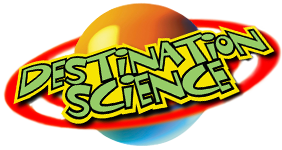March 14 is often celebrated as pi day (March 14th being 3.14, of course!). Pi is often thought of as a quirky concept that is only interesting to scientists. Most of the uses of π are in geometry and trigonometry, but advanced math concepts like statistics, complex numbers, and probability all rely on concepts concerning irrational numbers and pi.
Other scientists have used π to explain physical phenomena and pi is one of the factors in calculating the length of a pendulum. Carl Sagan even made the suggestion that within the numbers of π, the creator of the universe left a secret message.
The Origins of Pi
The circle was one of the first shapes noticed by ancient civilizations. Ancient Greeks believed that the circle was a symbol of balance in nature, reflected in the shape of the sun, moon, and other elements of nature. Scientists have studied circles for generations, understanding that round architecture was more efficient and durable, and safer under harsh weather conditions.
Early scientists needed a way to find the area of these circles. It is extremely difficult to measure the circumference of a circle, but mathematicians realized that the ratio between the circumference and the diameter of every circle was constant. Dividing the circumference by the diameter of any circle always had the same answer, no matter how big or small. Ancient civilizations estimated this figure at approximately 22/7, and one archaeological find from Babylon calculated the figure at 3.125.
The Symbol for Pi
Although this figure has been known to man for more than 4,000 years, it actually didn’t have its own symbol until the 18th century. A Welsh mathematician, William Jones, began using the Greek letter π to illustrate the ratio, but it was a Swiss mathematician, Leonhard Euler, who brought it into popularity in the mid-1700s.
During the same century, π was proven to be an irrational number. This is a number that does not terminate when written as a decimal number. For example 3.25 or 4.854956, or even 6.111111…, where the one repeats infinitely, are rational numbers. Scientists proved mathematically that pi was not a rational number. This means that the ratio of a circumference to the diameter when calculated as a decimal digit has a never ending number of integers.
The Importance of Pi
Pi is an important concept that touches almost all aspects of math and science, from creating safe architecture to discovering exoplanets in distant solar systems. Learning the basics of pi in school means understanding how circles work in the universe. It’s a critical concept that helps pave the way for other universal truths and irrational numbers discovered throughout multiple areas of STEM learning.
Fortunately, most people don’t need to remember all of pi’s digits to get use from it. Scientists and engineers typically use the first five digits when using pi in calculations, but for use in school, the number most commonly used is 3.14. Most scientific applications only need pi calculated to no more than a few hundred digits, but two dedicated researchers calculated pi to 2.7 trillion digits back in 2010, with the help of Yahoo’s computer database. It took the machines 23 days to output the information!
If you ask a scientist what pi is, they will tell you it equals 3.14159. If you ask a mathematician, they will tell you pi equals the circumference of a circle divided by its diameter. If you ask an engineer, they will say “Pi? Well, it’s about 3, but we’ll call it 4 just to be safe.” But if you ask a kid, they will just ask if they can have ice cream with it!



